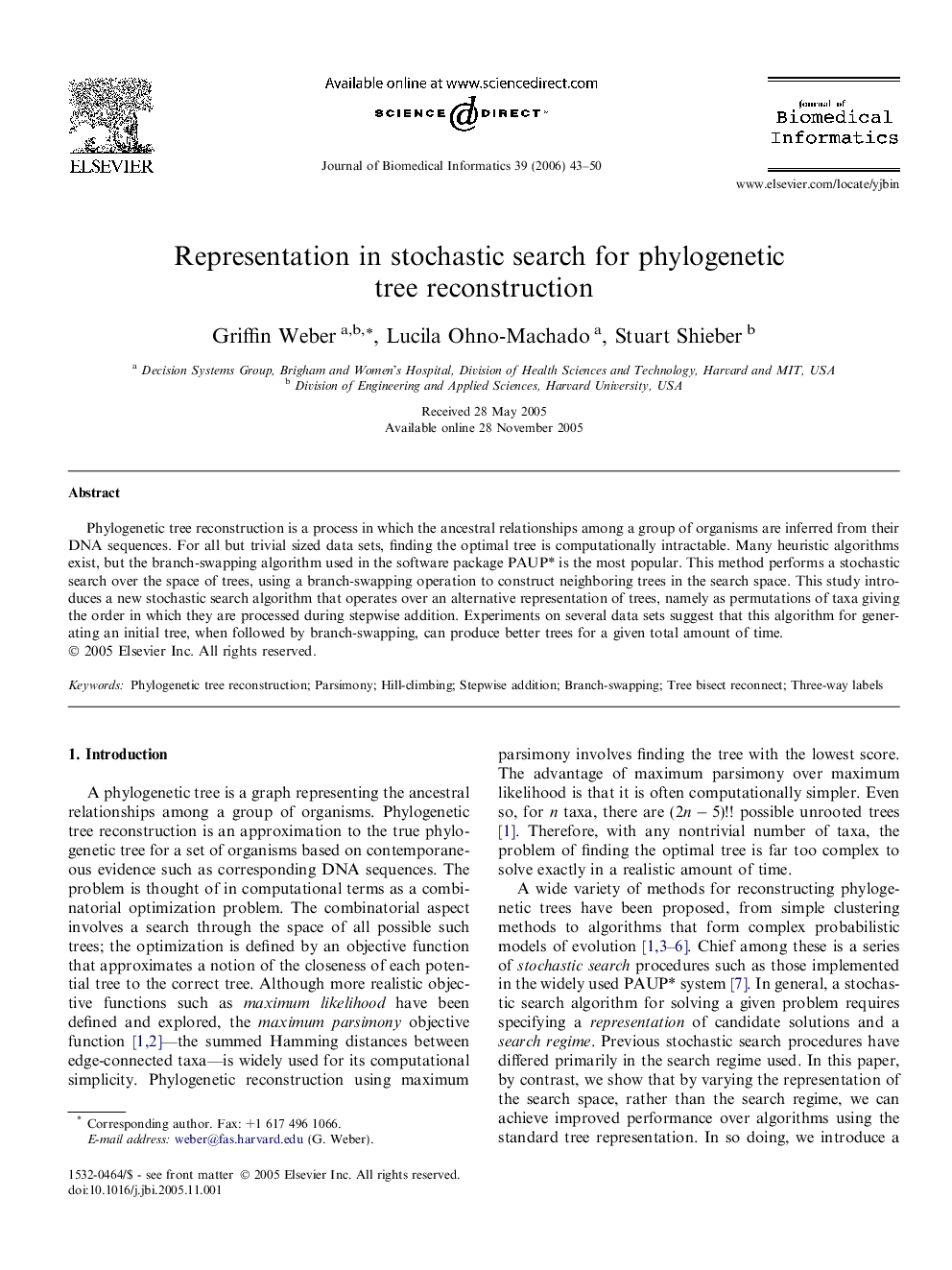| Article ID | Journal | Published Year | Pages | File Type |
|---|---|---|---|---|
| 517955 | Journal of Biomedical Informatics | 2006 | 8 Pages |
Phylogenetic tree reconstruction is a process in which the ancestral relationships among a group of organisms are inferred from their DNA sequences. For all but trivial sized data sets, finding the optimal tree is computationally intractable. Many heuristic algorithms exist, but the branch-swapping algorithm used in the software package PAUP* is the most popular. This method performs a stochastic search over the space of trees, using a branch-swapping operation to construct neighboring trees in the search space. This study introduces a new stochastic search algorithm that operates over an alternative representation of trees, namely as permutations of taxa giving the order in which they are processed during stepwise addition. Experiments on several data sets suggest that this algorithm for generating an initial tree, when followed by branch-swapping, can produce better trees for a given total amount of time.
